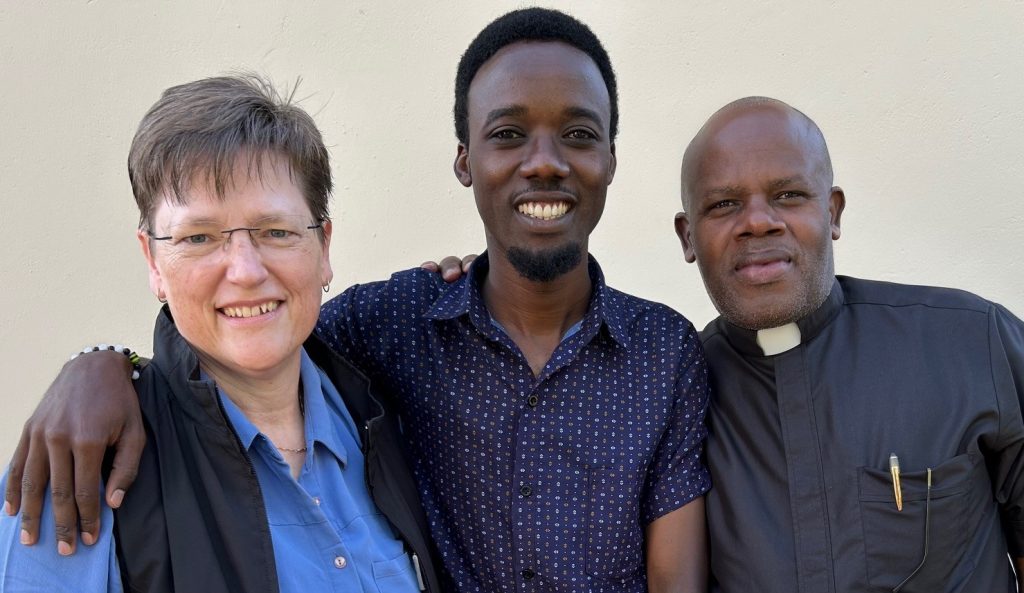
I’m joined by the survey presenter, Joseph, and teacher, Pastor Megiroo.
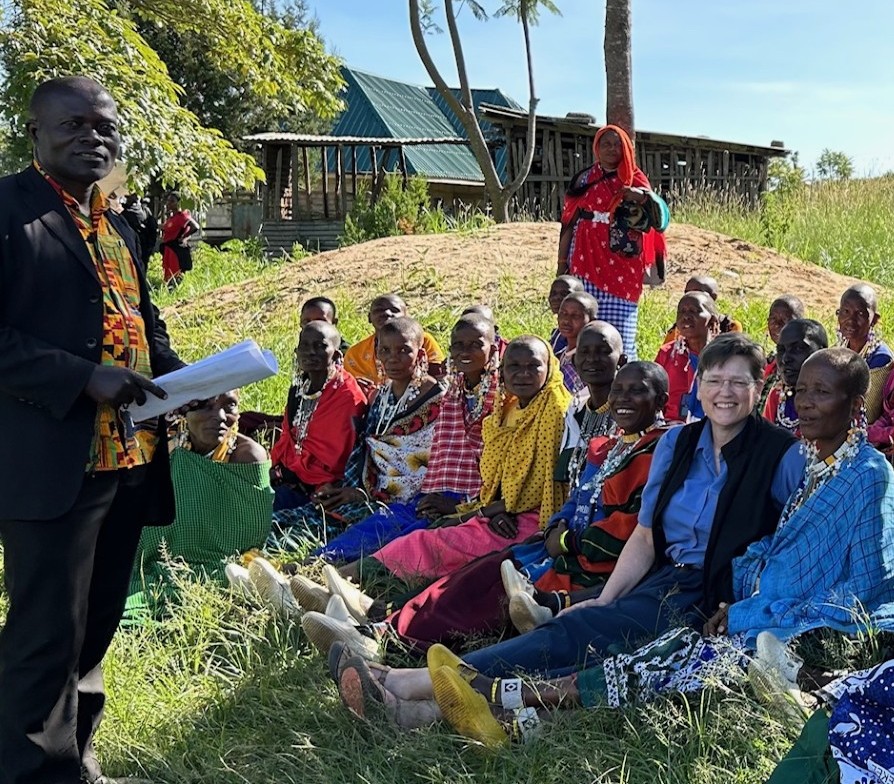
Lay pastor Raphael (left) is a natural leader and a great person to work with and make things happen. (I am among some mamas that are part of another project with which I’ve been connected.)
Upon arrival at the Lutheran church in the mountain village area, we were greeted by singing and a procession of handshakes by the elders followed by all other adults. Then, the children came by single file with their heads bowed before each of us. We gave them a Maasai blessing, touching each head. This is one of the many time during the day when I’m deeply moved.
There were 51 children present in grades 5, 6, and 7 who are in confirmation programs from all the surrounding neighboring villages. This is the Lutheran church’s typical way to have Christian education for middle school-aged students, after which the participants can be confirmed in their faith, also called an affirmation of baptism. In Tanzania, confirmation happens typically in grade 6, as grade 7 is the national exam year and takes priority without other distractions. (Next year, in the new Tanzanian curriculum there will not be a grade 7, so confirmation will be done in grade 5, and I’ve asked church leaders about issues regarding cognitive development for faith formation for even younger children.) Then, after their national exams, many students go to a boarding school for secondary education as there are no local secondary schools.
Here’s how the day went after our greetings and entering into the church.
First, our wonderful host, lay pastor Raphael, did a roll call of all the confirmation students, and we confirmed that we have consent forms signed by a parent or guardian according to the research ethics protocols. Then he introduces everyone and gives an overview of the day.

Roll call
Then, Joseph gives an introduction to the survey—what it is—and also the process—how it will be done. This takes even more time than the doubling of minutes I originally planned after talking with Laura and learning of the challenges of doing surveys in a Maasai context. My sense is that Joseph is very eager to please and is explaining each aspect thoroughly, very thoroughly.
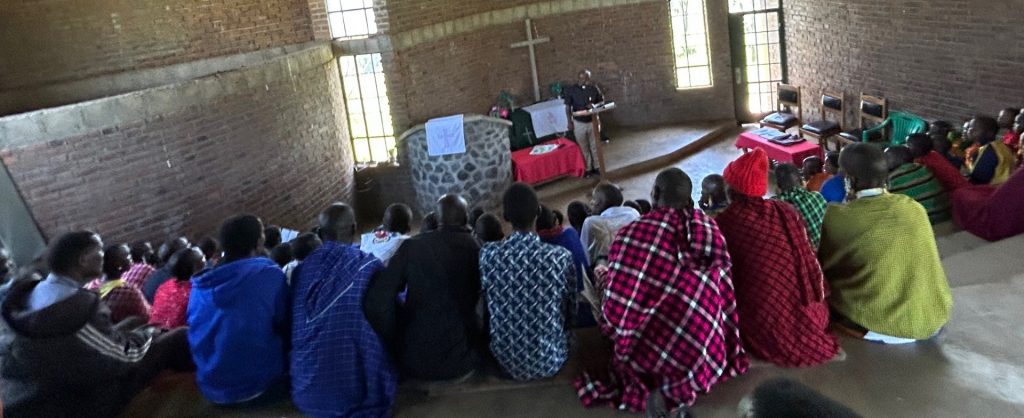
We pass out the one-page (front and back) survey form with 20 questions and a standard school notebook for the students to support the paper as they mark their survey responses. After the survey introduction, we also pass out a pen. The survey has one sticker of a distinctive animal (different from the other animals) stuck to the upper right corner of the survey form. In addition, there is one sticker too keep for themselves—still with its backing—which is paper clipped onto the first survey. This is the animal icon to help me anonymously track responses (hopefully development of knowledge and interest) of individual research participants.
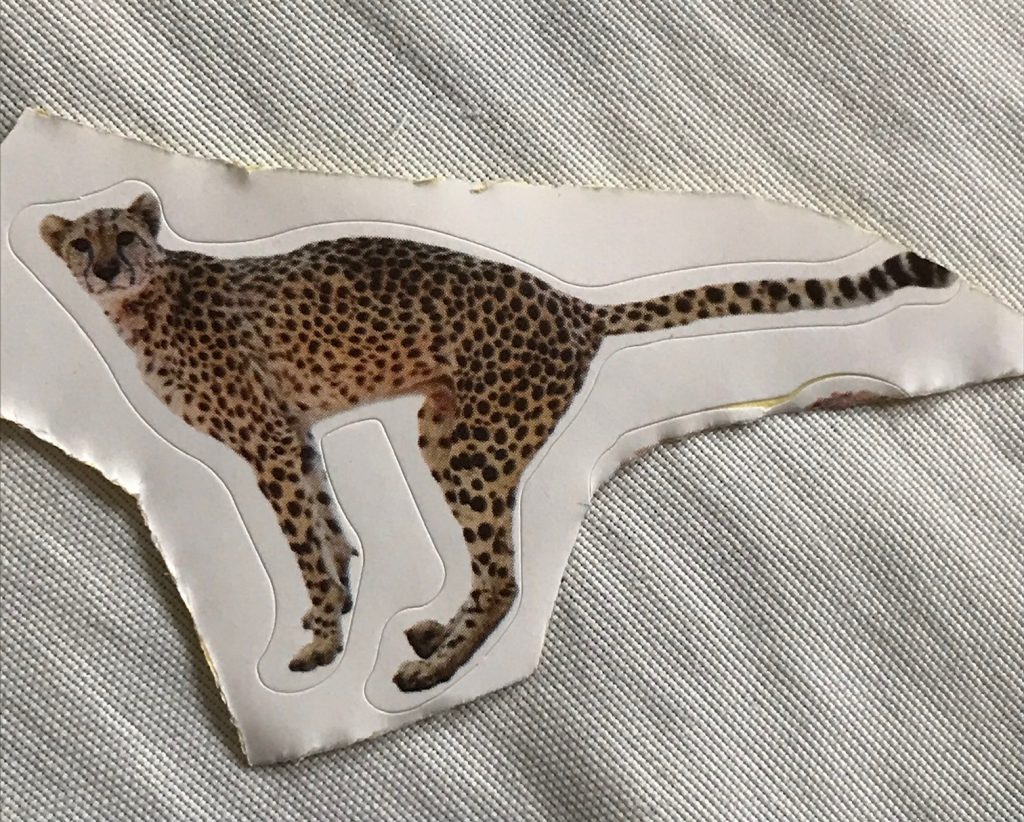
The sticker to keep
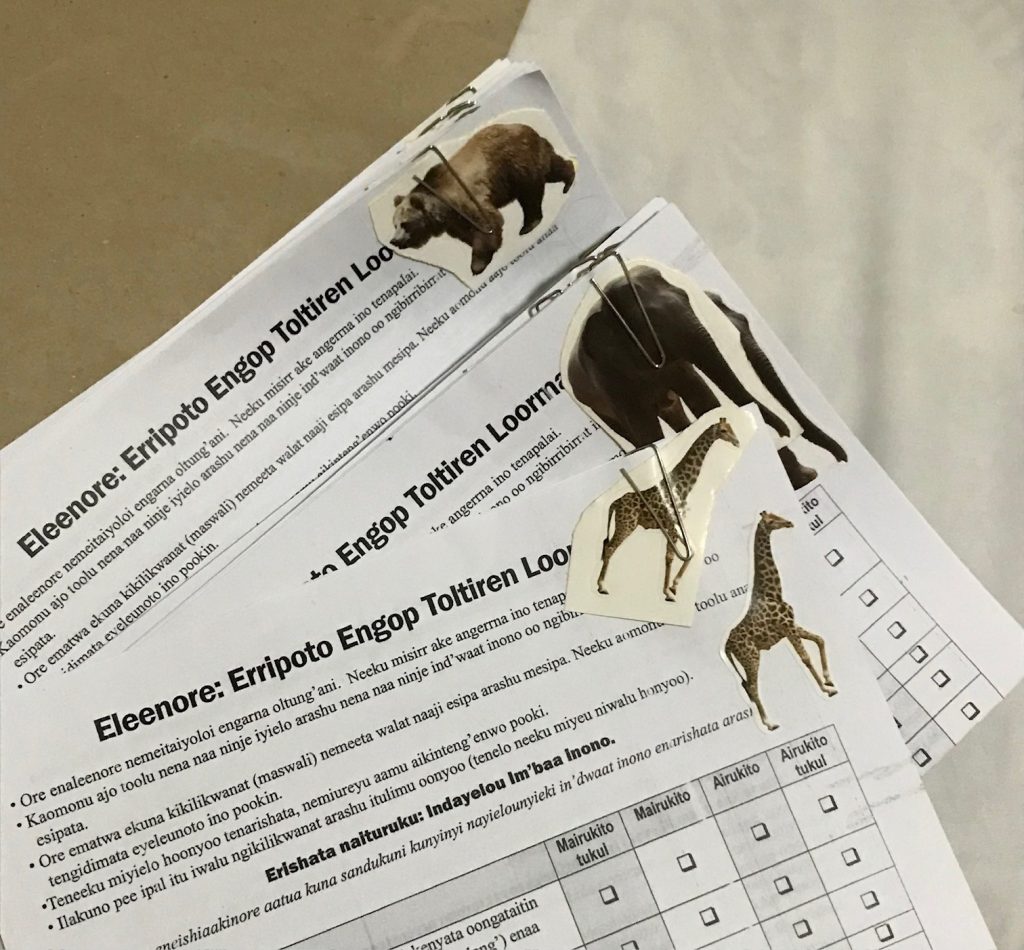
To help them remember their animal, I equipped Joseph with a script that included having them make the noise of the animal all together (or the imagined sound if they didn’t know the animal). This is another way to reinforce remembering their animal. We repeated making this noise several times during the sessions that day, which stimulated some good laughter!
Rev. Megiroo taught three lessons that he was the lead in writing with some collaborative conversations with the other 2 writers and my “conversation partner” lessons, after all, I’ve been doing a deep dive into this content and reading Tanzanian government environmental policy documents that most pastors and teachers don’t read. There was a break with chai between lesson 1 (biblical creation care) and 2 (Maasai traditional environmental knowledge).
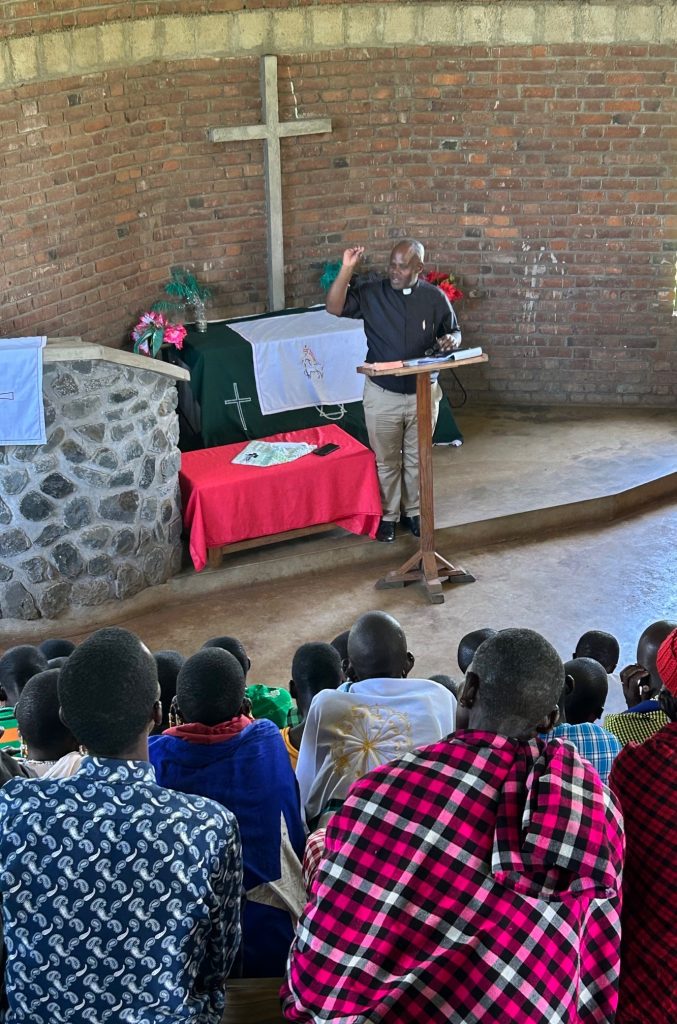
Rev. Megiroo teaching the lessons
After lesson 3 (climate science for a pastoralist context), it was supposed to be lunch, but the cooks needed more water, which had to be fetched from somewhere. We had a break of singing and Maasai dancing instead. It ended up being a nice transition after lesson 3, because after the lesson, we had a late lunch, and most of the adults (73 adult participants beyond the confirmation students!) left, leaving the confirmation students to take the post-lesson survey. This is where we hope to see in the survey responses development of understanding, responsibility, and hope.
I spread out all the surveys on two tables and had them come to picked up the survey form with their animal (and they compared with the one sticker of their own to keep aiding their memory).
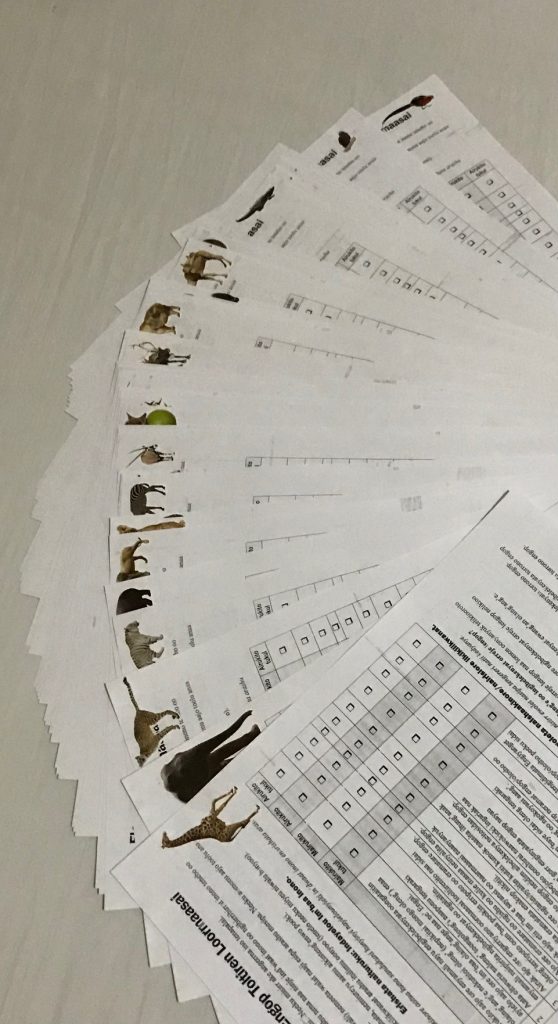
Amazingly, it worked! In less than 5 minutes, all 50 students had their corresponding survey with their animal sticker! With the possibility of tracking between pre- and post-lessons data, I can anonymously track individual responses over 3 surveys (a follow-up longitudinal study in 3 months) without using some forgettable randomly assigned number.
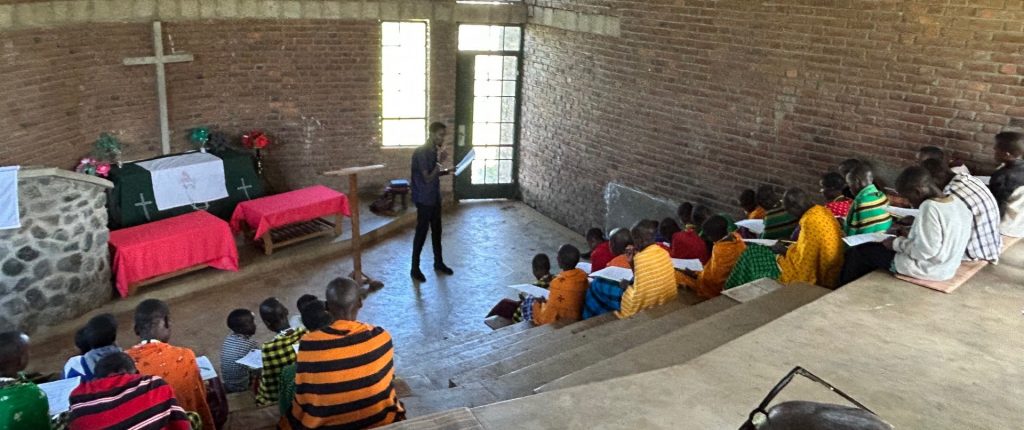
Joseph reads the post-lesson survey questions.
I will be back in 3 months for not only the longitudinal survey, but also to have a choir competition, which is prevalent in Maasai areas. (See one of the best video recordings here: https://www.youtube.com/watch?v=Ym2U_FwyGbk) My Maasai friend and colleague here at TUMA recently defended his PhD dissertation on the missional use of music in Maasai contexts that included choir competitions. (I helped him with the home stretch of his dissertation preparation.) He will be the judge of the competing small groups who will develop a song with 3 verses, each verse focusing on the main point of each of the 3 lessons—and sung in Maa using a traditional Maasai tune.
Overall, I was encouraged with the outcomes of the day. I’m sure there will be some surveys that will not be perfect, but my sense is that there will be enough responses that will indicate an adequate amount of helpful content. There are things to tweak for implementation in the next 7 fieldwork site visits, but the core procedures work well. I was impressed with how the students were attentive throughout the day. When the lay pastor asked them if they liked the lessons, there was a resounding “Yes!” (in Maa).
The students then each left the church with a gift of a school bag that I ordered to be made by a local seamstress with another notebook, pencil, eraser, and pencil sharpener.
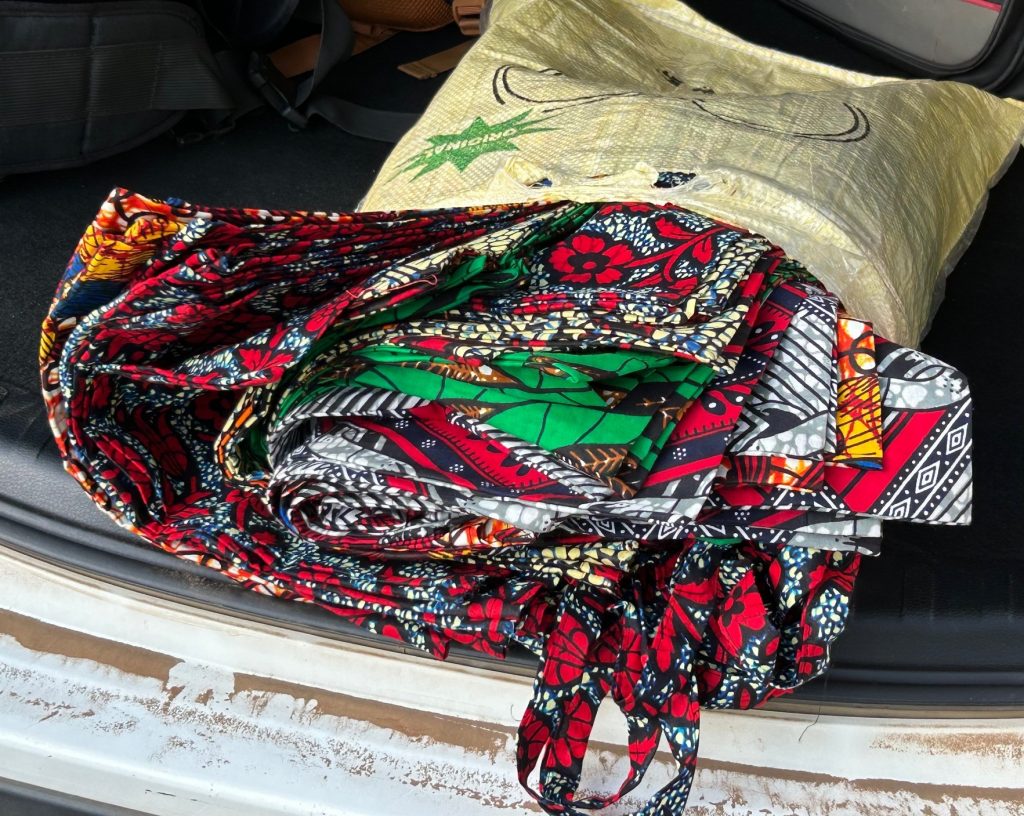
The colorful school bags before adding school supplies.
Then, we gave each a soda (a special treat) and gathered for a picture.

We headed back to Arusha, and on the way, we saw elephants, a few sitings of giraffe, hyena (rare), a couple Grant’s gazelle, several dik dik (smallest antelope) pairs, guinea fowl, and many other beautiful birds. What a great way to end a great day!

Mikitamayana Engai! / Mungu akubariki! / God bless you!